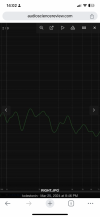I wouldn't worry about bit perfect playback if I were you. What the room does to your audio is far more important and it is what needs to be corrected.
The number 1 cause of unsatisfactory DSP correction is improper corrections made by the user. Subwoofers need bass management. In fact all systems need some form of bass management. Bass management is more than cutting peaks, you also need to align phase, time align, and much more.
At this point I encourage you to persist with DSP, but you will need to choose a DSP program. Some of them are "one button DSP" where a software algorithm decides on a correction for you. Other software have minimal automation, or no automation at all. This gives you finer control, but with a steep learning curve (and also the potential to make many mistakes along the way). I am skeptical of how accurate software automation can be compared to the manual approach. I have seen some good results, and some bad results. REW + RePhase are examples of software with no automation. If you go beyond its normal measurement functions and start considering using it for correction, you will quickly hit a brick wall and you will need a lot of guidance and reading. But trust me, it's worth it. You learn so much. You need to decide whether you want to go the easy route or take a more manual approach.
To get you started, here is a list of common software packages used by many members of ASR with a very brief description. Remember: more automation = easier, but also more dependent on software algorithm and less flexible. Less automation = steeper learning curve, but more user control.
- Dirac: a lot of automation, minimal user controls. Expensive.
- Focus Fidelity: new software, less automation than Dirac, user can over-ride algorithm. Inexpensive.
- Audiolense: more complete than Focus Fidelity, more advanced functions. Has some automation. User can over-ride algorithm. Inexpensive.
- Acourate: very minimal automation, more manual approach, very powerful. Extremely flexible. Inexpensive.
- REW + Rephase: zero automation, very manual, surprisingly powerful. Extremely flexible. Free.
- REW + MSO: some automation (software does the analysis for you) but the rest is manual. For bass only. MSO has a learning curve. Free.
- Audioweaver, Matlab, Octave: forget it unless you are an engineer or a maths nerd.
You could also use Room Shaper. This is a VST (meaning it is installed in your signal path) and it is almost plug and play. Corrects bass up to mid frequencies only.
Do some research, download a trial, and have a play.

